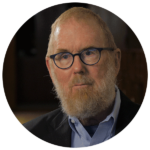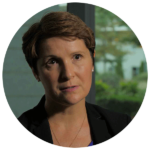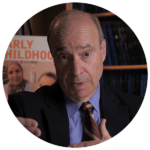Synopsis
Play Trailer

About The Film
Testimonials
“I think you’ve produced one of the best documentaries on early childhood adversity that I’ve seen. The incredible quality of what people shared with you on camera about their personal struggles over a period of more than two decades is a remarkable tribute to your professional skills and to the authentic personal commitment you brought to this project. Congratulations on both!!”
— Jack P. Shonkoff, M.D.
Director, Center on the Developing Child at Harvard University
“Mental Health America honored Broken Places with its 2019 media award because it opens unique windows into the lives of people who were born into adverse circumstances, experienced trauma, and have spent their lives seeking hope, stability, and health. Roger Weisberg has succeeded in opening these windows wider than ever before by revisiting families after two decades, giving us new insights into the effort it takes not just to help people survive adversity, trauma, and mental illness, but to thrive in spite of them.”
— Paul Gionfriddo, President and CEO
Mental Health America
“This documentary is remarkably unique in offering a perspective of lives unfolding over decades. There’s nothing more powerful than showing what happens to people, instead of implying or telling…The documentary is sure to be shown tens of thousands of times in communities across the world that are launching and growing their ACEs initiatives, and need some powerful inspiration to create healthy cities, states and countries.”
— Jane Stevens, Founder, Publisher
ACEs CONNECTION/ ACEsTOO HIGH
“This film provides a remarkable opportunity to understand that we must change the way we protect and support children in this country, and that the best way to support children is to support their families. A powerful and insightful film that teaches us about the importance of primary prevention.”
— Jerry Milner, Acting Commissioner, Administration on Children, Youth and Families
U.S. Department of Health and Human Services
“It’s a beautiful film and I hope it gets A LOT of public attention…The stories are powerful and moving and the contrast in seeing people as children and then as adults is very powerful. There is enough hope in it to inspire change while not soft pedaling the enormity of the problem…Well done and congratulations.”
— Sandra Bloom, MD, Co-Director
Center for Nonviolence and Social Justice, Drexel University
“The film represents an extraordinary lifelong project. We would live in a better society if this film was required watching for all policy makers.”
— Rahil D. Briggs, PsyD, National Director, HealthySteps
ZERO TO THREE
“How truly unique and very special to have the opportunity to follow alongside these families and their life stories as they have unfolded over so many years…Congratulations on this exceptional documentary. So moving to hear the voices of the children now as adults.”
— Renée Boynton-Jarrett, MD, ScD, Associate Professor,
Boston University School of Medicine/Boston Medical Center
“…You did a splendid job laying out the ACEs framework - better than I’ve seen anywhere. And your protagonists and their stories were remarkable – telling, eloquent and heart-breaking…I was delighted you spotlighted some of the successful trauma-informed interventions which work! So many are prepared to write off kids suffering from complex trauma…Poverty and racism are today’s major diseases of childhood.”
— Larry Adelman, Co-director & Head of Production, California Newsreel
Producer, The Raising of America
“The message of Broken Places is clear. It says that toxic stress and its downstream consequences are costly. It calls us all to create better interventions based on this understanding. And for this reason, it is a powerful tool for good in strengthening the work of my organization and our partners.”
— Elisabeth D. Babcock, MCRP, PhD, President and CEO
EMPath – Economic Mobility Pathways
“It’s a magnificent film. Hearty congratulations for completing it and for the great message it will deliver to audiences around the world.”
— W. Thomas Boyce, MD
Chief Division of Developmental Medicine, University of California, San Francisco
“I was amazed by the life trajectories documented here. Very impressive work.”
— Takao Hensch, MD, Professor, Molecular & Cellular Biology,
Professor, Neurology (Children’s Hospital)
Center for Brain Science, Harvard University
“I was so profoundly captivated by Broken Places…Thank you for spotlighting the child welfare system in a way that no one else does. We need to shine a light on how these programs, policies and institutions affect the young people they are meant to help.”
— Lynne Echenberg, Esq., Director, Strategic Initiatives
Good Shepherd Services
“This is a powerful and informative documentary - congratulations!”
— Brian Smedley, Co-founder and Executive Director
National Collaborative for Health Equity
“I'm so excited to let communities know about this movie and for them to have another viewing option for community building and sharing about developmental trauma…It was especially powerful to see individuals and families age and over a period of time. I appreciate that you included the voice of all experts (academic and first-hand expertise). As someone with lots of ACEs, that makes it exceedingly relatable and doesn't have the alienating or distancing tone/vibe many documentaries and films can have.”
— Christine Cissy White, Community Facilitator
ACE’S Connection
“This is fantastic…Thanks again for sharing and for highlighting such an important topic.”
— Lisa WilliamsTaylor, Ph.D., Chief Executive Officer
Children’s Services Council of Palm Beach County
“…May I say how impressed we are with the film and the way you have captured this topic with both heart and rigor. We are so grateful to have been allowed access to this piece of art…The screening was a fabulous success.”
— Kirsten Lysne, Ph.D., Licensed Psychologist
Member, Minnesota Chapter of the American Academy of Matrimonial Lawyers
“I found your film to be a wonderful and true rendering of Intergenerational trauma narratives in all their complexity…Moreover, as a clinician and developmental neuroscientist, the focus of my research has been to understand the minds and brains of traumatized mothers and to create new intervention models based on our findings to interrupt Intergenerational transmission. So, the film rang particularly true.”
— Daniel S. Schechter, MD, Director
Stress, Trauma and Resilience, Department of Child and Adolescent Psychiatry
Hassenfeld Children’s Hospital at NYU Langone
“Your film depicts young people and families humanely, honestly and through real-life experiences. In particular, the phone call between two brothers and their mother, as she explains why she could not be in court for a hearing to terminate her rights, and the same brothers learning some time before from their mother about how she could not remain drug-free and would start treatment anew resonated so much.
“… Jewish Child Care Association will use your powerful work to advance our work. We have much progress to make. Broken Places will help.”
— Ronald E. Richter, CEO
JCCA, New York, NY
“Brooklyn family court Teen day was the most successful one ever! We had over 70 young people from the child welfare and juvenile justice systems attend! We showed clips of the documentary and both Danny and Daniela were there to speak afterwards. All of the young people as well as the Court staff who attended were riveted by the documentary and then even more so by the words of Danny and Daniela.
“Thank you so much for sharing it with me and giving me the opportunity to provide much needed inspiration to all who were there.”
— Hon. Jacqueline Deane
Kings County Family Court, Brooklyn, NY
“The film effectively addresses the intricacies of navigating through the generational and environmental trauma experienced by some families and simultaneously provides a glimpse into why some kids thrive in and through the trauma while others crumble because of it. A gripping film that will force the viewer to acknowledge the harmful impact of unaddressed trauma in a kid’s life and show how resiliency plays a big role in healing.”
— Allyn Griffin, Educator
Prescott School District, Prescott, WA
“Nothing is more powerful than seeing the impact of trauma through the eyes of the child who has experienced it. Broken Places helps us gain an important perspective on the social, emotional and health consequences of abuse and neglect. This sensitive portrayal of the main adult characters, personally known to the filmmaker since they were young, comes through in every frame reminding us that, indeed, many are strong at the broken places. A truly worthwhile exploration of the human spirit.”
— Karen G. Foley, President & CEO
Juvenile Protective Association
“Broken Places tells the story of adversity and child development like no other film. We were completely captivated by the scenes filmed during early childhood and then either profoundly saddened or overjoyed when we learned how these children grew into adulthood. The stories of adversity and resilience were powerful. Every member of our diverse audience was deeply moved by the childhood traumas we witnessed. The film illustrates that for some children, even against formidable odds, risk can be mitigated through predictable compassionate relationships.”
— Dr. Robert Allan Shapiro, Director
Child Abuse Team, Mayerson Center for Safe and Healthy Children, Cincinnati Children’s Hospital
Professor of Pediatrics, University of Cincinnati College of Medicine
“Our viewers saw themselves and their work in “Broken Places”. The film's sensitive and honest portrayal of young people and families struggling with trauma spoke to our audience of local social service providers, advocates, students, and community members. It is ultimately a hopeful film and, based on the discussion after the screening, our group was eager to connect with one another to support their shared interest in the well-being of children.”
— Kristin Morse, Executive Director
The New School Center for New York City Affairs
Major National Screenings
Grade Level Reading Annual Conference
Zero to Three Annual Conference
Kansas International Film Festival
ACEs Conference Hosted by Center for Youth Wellness and ACEs Connection
Economic Mobility Pathways Conference
Disrupting Poverty Conference
New Yorkers for Children & Administration for Children Services Forum
Cinequest Film Festival
Office on Child Abuse and Neglect, Children’s Bureau National
National CASA/GAL Conference
Juvenile Protective Association
Mental Health America Annual Conference – Media Award to Broken Places
Beyond Consequences Institute’s Spring Trauma Informed Schools Conference
Beyond Paper Tigers Trauma-Informed Care Conference
Diabetes in Indian Country Conference
Charlotte Film Festival
Maine Resilience Building Network
Academy of Violence and Abuse Global Health Summit
United Nations Association Film Festival
The New School Center for New York City Affairs
Children’s Bureau & Indiana Department of Child Services Conference
Ojai Film Festival
Attachment Trauma Network 3rd National Conference for Creating Trauma-Sensitive Schools
Institute for Families, School of Social Work, Rutgers University
33rd Annual Research & Policy Conference on Children, Adolescent and Young Adult Behavioral Health
41st National Association of Pediatric Nurse Practitioners Annual Conference

Writer/Producer/Director
Director's Statement
In BROKEN PLACES we interweave these longitudinal narratives with commentary from a few nationally renowned experts. Before my interviews with these experts, I asked them to screen the stories of our subjects, so instead of making broad, abstract, general comments, their observations are grounded in moving narratives. In addition to shedding light on exciting new developments in neuroscience, they also help explain the kind of life outcomes we reveal – why some of our subjects were able to make it while others were not. Along the way, they also help answer some far-reaching questions. How does early adversity affect the brain of young children? Why are some children resilient while others are not? Is resilience determined by genes, the environment, or some interaction between the two? Can we identify children who are likely to be resilient as well as children likely to experience bad mental and physical health outcomes down the road? What kinds of early childhood interventions strengthen resilience, and how can we make these interventions widely available to the children most at risk? I believe that the answers to these questions hold the keys to solving the greatest public health crisis we face today.
Meet Our Characters
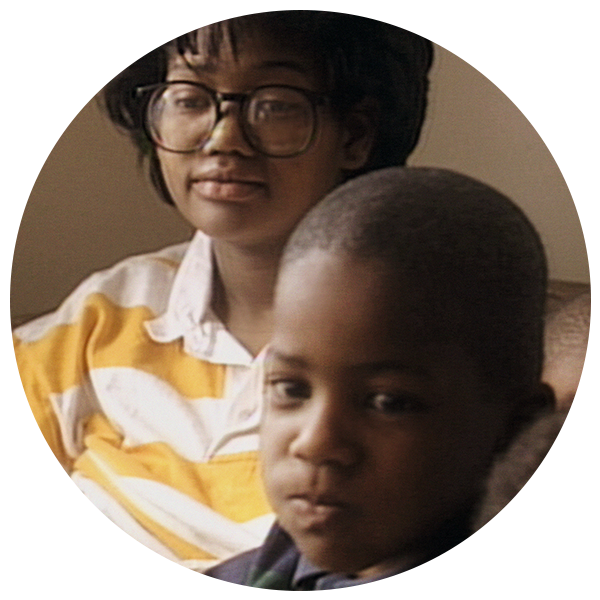
Yvonne and Bobby Gross
We profiled Bobby Gross – aka Storm – in our 1988 film, OUR CHILDREN AT RISK, when he was an angry 5-year-old growing up in extreme poverty. His 21-year old mother, Yvonne, was struggling with depression and was so overwhelmed trying to raise 5 children under the age of 6 that she was unable to offer her children the kind of attention that they sorely needed. Bobby was showing alarming signs of aggressive anti-social behavior at home and was failing in school. We filmed him being examined by one of the nation’s most renowned pediatricians, Dr. T. Berry Brazelton, who painted a bleak future for Bobby in the absence of sustained early intervention. Dr. Brazelton’s prediction turned out to be eerily prescient when we revisited Bobby three decades later. We learn that he ended up spending his teenage years in and out of mental institutions and his twenties in and out of prison. He briefly married and had a son, but the authorities terminated his parental rights and placed his son in foster care after Bobby was incarcerated multiple times for abusing his wife and child. At age 35, Bobby’s sole source of support is social security disability.
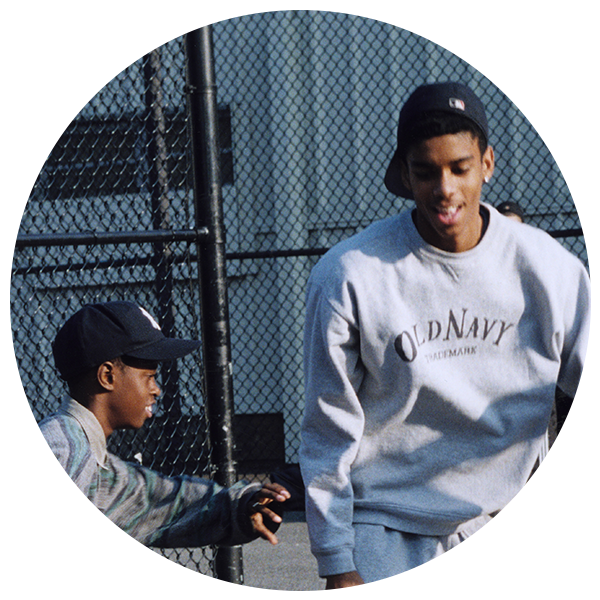
Danny & Raymond Jacob
Danny and Raymond Jacob were the principal subjects in our Academy Award-nominated film WHY CAN’T WE BE A FAMILY AGAIN. They were abandoned at a young age by their mother when she became addicted to crack cocaine. The boys, who never knew their fathers, were raised by their grandmother, Erslena. The story of Danny and Raymond illustrates how early childhood adversity impacts kids differently. Danny, the older brother, graduated from high school and attended college. He currently hosts a radio talk show and coaches a basketball team for at-risk youth. His younger brother, Raymond, became his assistant coach, but he had a much harder time overcoming the traumatic experience of being abandoned by his mother at a young age. He began having hallucinations in his teens and suffered a mental breakdown. He was hospitalized over a dozen times, received a diagnosis of manic depression, and currently draws social security disability.

Daniella Rin Hover
Daniella Rin Hover has overcome countless difficulties throughout her life. She was featured in our 2004 documentary, AGING OUT, which chronicled the journey of three young people “aging out” of the foster care system. The film highlighted the financial, housing, legal, and emotional challenges these teens faced as they struggled to fend for themselves. Of the three subjects we profiled, Daniella is the sole survivor and dedicates her continued advocacy efforts to the two young people who tragically died shortly after the film was completed. When we first filmed Daniella 16 years ago, she was bouncing around the foster care system after being severely abused and neglected as a child. While living in a group home, Daniella fell in love with Veasna Rin Hover, who also grew up in the foster care system after his parents were murdered in Cambodia. They had their first child while they were both still living in separate group homes. After leaving foster care, they got married and had a second child a few years later. When we revisit Daniella after 16 years, we learn that Veasna began to repeat a deeply entrenched pattern of abuse, forcing Daniella to run away with her kids to a domestic violence shelter. Despite the enormous obstacles she continues to face, Daniella currently facilitates Wellness Workshops for Weight Watchers. Legally separated, she is currently raising her 14-year-old daughter Skye, who is attending a prestigious specialized high school in New York City.
Meet Our Experts
Viewers hear from Dr. Jack P. Shonkoff, a pediatrician and the Director of the Center on the Developing Child at Harvard University, who explains how exciting new developments in imaging, neurobiology, and genetics now offer a clearer picture of the myriad ways that childhood adversity affects brain architecture, early development, and later-life outcomes.
We interview another visionary pediatrician, Dr. Nadine Burke Harris, who founded the Center for Youth Wellness, and is leading a national effort to revolutionize pediatric medicine and transform the way society responds to kids exposed to significant adverse childhood experiences and toxic stress.
We also interview Dr. Thomas Boyce, the Chief of the Division of Developmental Medicine at UCSF, who explains that children have different genetic susceptibility to adversity. Dr. Boyce labeled resilient kids dandelions, because like the flower, they are able to survive and even thrive in a harsh environment. In contrast, Dr. Boyce described highly sensitive kids as orchids, because they need a great deal of nurturing in order to thrive.
Dr. Rahil Briggs, the National Director of HealthySteps, is enrolling at-risk families into a model program which provides behavioral health and parenting interventions for young parents and their children during routine pediatric visits. This prevention model now operates in 130 pediatric clinics in 20 states.
Another program that has successfully demonstrated that early childhood interventions can be brought to scale is the Harlem Children’s Zone. We interview Geoffrey Canada, who achieved such impressive results over the past 30 years that other cities, like Minneapolis, have eagerly adapted the Harlem Children’s Zone model.
We travel to the north side of Minneapolis, where we meet Sondra Samuels, who runs NAZ, the Northside Achievement Zone. We illustrate how NAZ’s two-generation approach uses family and academic coaches to promote healthy child development and school readiness. We also capture an emotional scene as proud parents come forward with their 3-year-old babies to receive their graduation certificates during a stirring College-Bound Babies ceremony.
In Minneapolis, viewers also meet economist Art Rolnick, a Senior Fellow at the Humphrey School of Public Affairs, whose data shows that every dollar invested in high-quality early childhood intervention for disadvantaged children pays an inflation-adjusted 18 percent annual rate of return.
Meet Our Crew
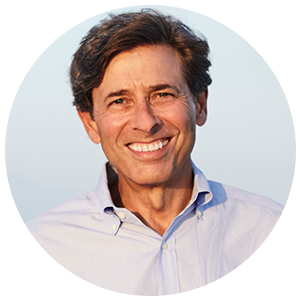
ROGER WEISBERG
Writer/Producer/Director
Roger Weisberg joined public television station WNET as a staff Producer in 1976. Since 1982 when he founded an independent production company, Public Policy Productions, Weisberg has written, produced and directed 32 documentaries. These films aired in primetime on PBS in the U.S., and many were released theatrically and broadcast around the world. Weisberg’s documentaries have won over 150 awards including Peabody, Emmy, and duPont- Columbia awards. He received an Academy Award nomination in 2001 for Sound and Fury and in 2003 for Why Can’t We Be a Family Again? Additional information about Weisberg’s previous productions can be found here.
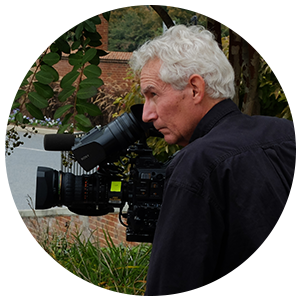
JOHN HAZARD
Cinematographer
John Hazard is a cinematographer with a long resume of documentary films and a special passion for cinema vérité. John has traveled the world shooting documentaries for Discovery, National Geographic, and the New York Times. Recent productions include NOVA, History Detectives, and biographies about Richard Nixon, the Kennedys, and George Wallace for PBS; King Tut’s Final Secrets for National Geographic; and Triangle: Remembering the Fire for HBO. John also shot five of Roger Weisberg’s documentaries over the past decade.
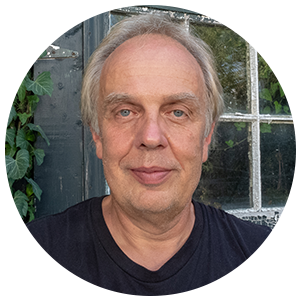
PASCAL AKESSON
Editor
Pascal Akesson has been a film editor for over twenty-five years. His award-winning documentaries have appeared on PBS, HBO, Discovery Channel, History Channel, ABC, Canal+, Arte, NHK and Lifetime, as well as at numerous international film festivals, including Cannes, Berlin, Sundance and Miami. Recent productions include Women, War and Peace for PBS, a five part series on women’s role in war and peace building; Dirty Business, a documentary about the myth of clean coal; and Fire in the Blood, the story of how Western countries condemned millions of people in the developing world to death by blocking access to AIDS drugs. Pascal also was the Editor for Public Policy Production’s Money and Medicine, an investigation of the dangers of over-treatment and runaway healthcare spending, and Dream On, a road trip in search of the vanishing American Dream.
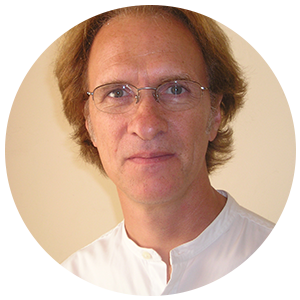
MARK SUOZZO
Composer
Mark Suozzo has composed music for many PBS and HBO documentaries. He has supplied scores for American Experience, POV and Independent Lens, working with award winning directors Thomas Lennon, Chana Gazit, Michael Camerini & Shari Robertson and Cynthia Wade. Mark composed music for Roger Weisberg’s and Josh Aronson’s Sound & Fury as well as Roger Weisberg’s and Murray Nossel’s Why Can’t We Be A Family Again?, both of which garnered Oscar nominations. Mark also scored Whit Stillman’s films Metropolitan, Barcelona, Last Days of Disco, Damsels in Distress, The Cosmopolitans and Love & Friendship. His other film credits include Mary Harron’s The Notorious Bettie Page, and Shari Springer-Berman and Bob Pulcini’s American Splendor and The Nanny Diaries. Mark is currently the Co-Director of the Graduate Film Scoring Program at NYU/Steinhardt.

STEPHEN SEGALLER
Executive Producer
Stephen Segaller oversees all national programming from WNET’s producing entities – THIRTEEN, WLIW21, Creative News Group and NJTV. These productions include Great Performances, Nature, American Masters, Secrets of the Dead, PBS NewsHour Weekend, and Cyberchase; documentary series featuring Henry Louis Gates Jr., Niall Ferguson, and Simon Schama; Shakespeare Uncovered, about to air its third season, and Women, War & Peace, airing in 2019. In September 2018, Segaller’s portfolio as executive in charge will include Amanpour & Company – the nightly news and conversation program featuring CNN’s Christiane Amanpour and four New York-based contributing correspondents: Walter Isaacson, Michel Martin, Alicia Menendez, and Hari Sreenivasan.







